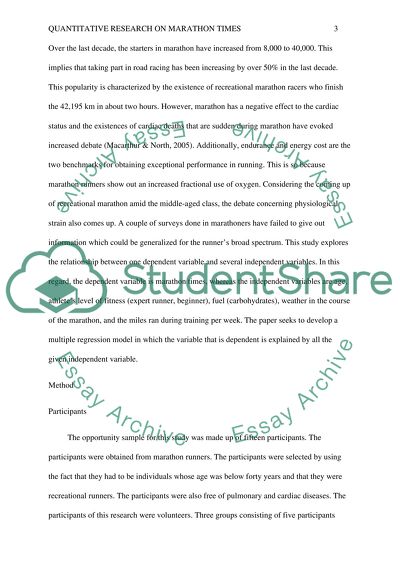Cite this document
(“Quantitative Research on Marathon Times Essay Example | Topics and Well Written Essays - 2500 words”, n.d.)
Quantitative Research on Marathon Times Essay Example | Topics and Well Written Essays - 2500 words. Retrieved from https://studentshare.org/statistics/1401392-quantitative-research-on-marathon-times
Quantitative Research on Marathon Times Essay Example | Topics and Well Written Essays - 2500 words. Retrieved from https://studentshare.org/statistics/1401392-quantitative-research-on-marathon-times
(Quantitative Research on Marathon Times Essay Example | Topics and Well Written Essays - 2500 Words)
Quantitative Research on Marathon Times Essay Example | Topics and Well Written Essays - 2500 Words. https://studentshare.org/statistics/1401392-quantitative-research-on-marathon-times.
Quantitative Research on Marathon Times Essay Example | Topics and Well Written Essays - 2500 Words. https://studentshare.org/statistics/1401392-quantitative-research-on-marathon-times.
“Quantitative Research on Marathon Times Essay Example | Topics and Well Written Essays - 2500 Words”, n.d. https://studentshare.org/statistics/1401392-quantitative-research-on-marathon-times.


